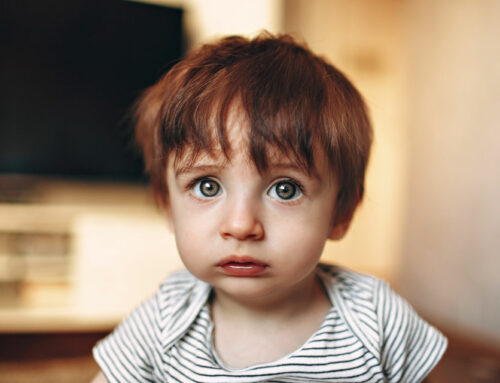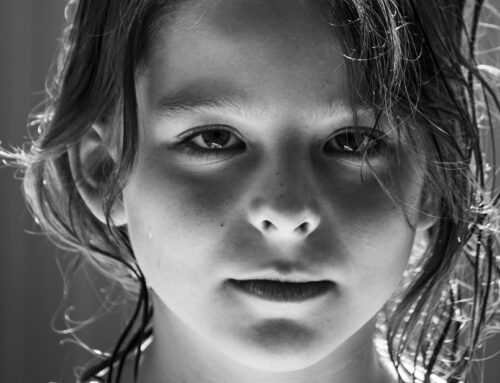How to Support Innovative Young Mathematicians, Artists, Writers and Scientists
How can you possibly stimulate the mind of a young person who not only has high learning potential (HLP) but is also a highly inventive and creative thinker? Can you support and stretch a strongly creative brain, not only in a child thought of as ‘arty’, but in one who prefers STEM subjects?
‘Creativity’, (thinking creatively), is recognised by both Potential Plus UK and specialist tools as a core trait likely to be observable in high potential learners, alongside Intellectual Ability, Academic Ability, Artistic Talent, Motivation and (for older children) Leadership.
Characteristics
The characteristics of creativity in a high potential learner include:
- Being imaginative and generating many ‘out of the box’ seed ideas to ‘take and run with’.
- Making unusual but relevant connections between concepts.
- Approaching life like a scientist or explorer.
- Creating original writing, songs or mini plays.
- Quick-thinking with jokes, ironic observations, word play or ‘improv’ humour.
- Innovation in problem solving, game creation or conflict resolution.
It is important to note that the named trait of Creativity is not the same as Artistic Talent, which would manifest in rich works of art showing an understanding of artistic variations, colours, pitch, movement or performance techniques.
Interestingly, creative thinking strengths also intertwine with critical thinking skills, as is shown in the partner article Critical Thinking Skills – a Detective Flair, from Arts to Sciences
How to Boost Creative Strengths
The following ideas can be used with all ages, from younger child to teens; adapt your expectations as appropriate, albeit still pushing their growth in a gentle way. Remember, give a child space, allow them to fix their own problems, praise their efforts (not outcomes), welcome mistakes as a part of the creative process – and have fun!
These first examples expand upon suggestions in the Potential Plus UK blog Creativity Of Thought which provides a useful background to the key features of creative thinking.
- Regularly ask ‘what if’ questions – even plain silly ones – to encourage lateral, imaginative trains of thought. Encourage a range of answers and if you see a flaw, don’t criticise, instead ask curiously how it would be overcome. To extend the topic, enquire “How would that work for a dog / on Mars / in a vacuum / as a pop video / in binary…?” Use their interests to inspire your questions.
- Allow free, undirected playtime to facilitate innovation and exploration. For older children or teens, this might translate into a ‘chillout hour’ with mellow music, a sketchpad or ‘zentangles’, or the time to plan a bedroom redesign, for example. You may need to discourage phones and screens; use your discretion.
- Break the rules – literally (by fundamentally changing a favourite game) or figuratively (by having a hot chocolate in summer). Attempt 10 minutes of saying the opposite of what you really mean. Discuss if it would be chaotic or easy if everyone did the opposite to usual.
- Try ‘junk modelling’, making art or plans out of unwanted household items destined for recycling. Leave it casual or set an appropriate challenge to produce something that looks like a house / village / 3D representation of the town that you live in…
- Encourage pretend play; great for young children’s imagination, it also helps build skills that support successful creative thinking. Older children may not want to be firemen or princesses, but may discover that they love playing age-appropriate SIMS games on the computer (e.g. building a functioning society or caring for animals) or creating short, artistic or funny videos on their mobile phones in which they take on a different persona.
- Expand their minds, knowledge and experiences. If regular trips to museums and galleries are not possible, many national and international exhibitions, cathedrals and other key places now offer high-quality online tours. Similarly, even if your local library isn’t accessible to you, they are likely to offer a huge range of book apps, audiobooks or streaming services that are free to access.
- Creative Thinking – ‘Go for a Burst!’ is a great blog that takes you through a fun and eclectic ‘easy starter’ to expand creative thinking in toddlers to teens. Have a conversational brainstorm to do with literally anything that comes up in chat, play or the world around you!
- As a ‘portable’ idea, think of a random item, for example a paper clip, and challenge your child, family or class to come up with 5 possible uses for it. Adapt this as their skill levels increase to add a dimension such as “Create 5 uses if… (you were stuck on a desert island / in a carwash and wanted to escape / eat / attract someone’s attention)”.
Skills Builder Partnership
For more structure, plan around the expertise of the Skills Builder Partnership, who have helped hundreds of Primary, Secondary and SEN schools to integrate essential skills into the everyday curriculum. They believe creativity, (“the use of imagination and the generation of new ideas”), to be one of these 8 essential skills and ‘the’ complement to Problem Solving (see https://www.skillsbuilder.org/universal-framework/creativity). Potential Plus UK is currently working with the Skills Builder Partnership to discover the best way to use the framework at home with parents.
A Skills Builder develops their creativity on a learning journey in which they: imagine; generate ideas in different ways; use creativity in varied contexts; develop ideas; innovate; and then eventually support others through coaching. Adaptable for learners of any age, the final ‘coaching’ could perhaps mean inspiring younger children at a local ‘messy play’ or library session or mentoring a local home education group or Key Stage 1 classroom.
Dyslexia
In addition to acknowledging the difficulties they face, The British Dyslexia Association describes how dyslexic people “often have strong visual, creative and problem-solving skills and are prominent among entrepreneurs, inventors, architects, engineers and in the arts and entertainment world” (https://www.bdadyslexia.org.uk/dyslexic/dyslexia-and-specific-difficulties-overview). For any child with high learning potential diagnosed with dyslexia, (and therefore having Dual or Multiple Exceptionality’ (DME)), adjustments should be made as appropriate. For example, creativity can still be boosted by many of the ways suggested here; however, as regards writing, they could create their stories verbally using props, pictures or aids such as Rory’s Story Cubes.
Creative Thinking Resources for High Potential Learners
From Potential Plus UK
- Advice Sheet PA701 Developing Creative Thinking Skills
- Advice Sheet PA513 Creativity and High Learning Potential Children
Blogs
- Critical Thinking Skills – a Detective Flair, from Arts to Sciences
- Creative Thinking – Go For A Burst!
- Developing Thinking Skills Through Board Games
- Using Visual Arts to Foster Creative Thinking Skills
Creativity Weblinks
- Open-ended fun activities with creative skills: https://www.teachstarter.com/gb/blog/activities-to-help-kids-develop-creative-thinking-skills-gb/
- “For those parenting children of high intelligence, encouraging originality may be just as important as nurturing cognitive growth”; Mensa bulletin Creating Creative Children: https://www.giftedguru.com/wp-content/uploads/2014/05/August-Bulletin-creativity.pdf
- Fun ‘Creative Thinking Activities and Exercises for a Smarter Brain’: https://plentifun.com/creative-thinking-activities-exercises.
Creativity Books
- Piirto, J. (2020). Understanding Creativity (for both parents and teachers)
- Simister, C.J. (2009). The Bright Stuff: Playful Ways to Nurture Your Child’s Extraordinary Mind
- Treffinger, D., Isaksen, S., Stead-Doval, B. (2005). Creative Problem Solving: An Introduction
Creativity in Education, Weblinks
- Developing Creativity in Gifted Children: The Central Importance of Motivation and Classroom Climate, (Hennessey): conclusions – https://nrcgt.uconn.edu/research-based_resources/hennesse/; in full – https://nrcgt.uconn.edu/newsletters/fall052/
- Mathematical creativity and problem solving at Wild Maths: http://wild.maths.org
Creativity Books for Education
- Lucas, B., Spencer, E. (2017). Teaching Creative Thinking (Pedagogy for a Changing World)
- Waller, N. (2017). A Creative Approach to Teaching Science
- Smutny, J., von Fremd, S. (2008). Igniting Creativity in Gifted Learners, K-6: Strategies for Every Teacher
For Young People
Usborne’s Write (and Draw) Your Own series (including Storybooks, Comics, Scripts, Magazines, Mysteries, Sci-Fi and Fantasy)

About the author: Gillie Ithell is a writer and editor for Potential Plus UK with a B.A. degree in Modern Languages & Communication. Having worked internationally as content manager of classic board games and ‘edutainment’ software, Gillie now writes to inspire others like herself; on a daily journey with High Learning Potential.






